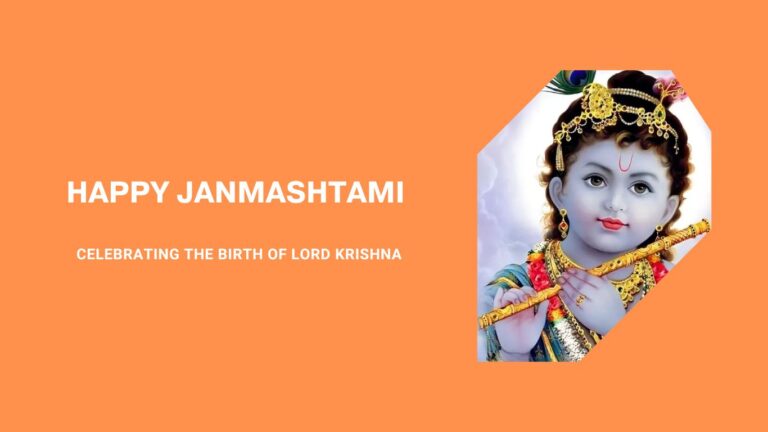The e-Mudra loan is a loan scheme introduced to Indian citizens for small businesses( MSMEs ).
Introduction
The Micro Units Development and Refinance Agency (MUDRA) loan is a financial product launched by the Government of India to provide funding support to micro and small enterprises.
The main aim of the MUDRA loan is to provide easy and affordable credit to the underserved sections of society, such as micro and small business owners, to help them grow their enterprises. The loan is provided by various financial institutions and banks across India, including the State Bank of India (SBI).
In this article, we will be discussing the details of the MUDRA loan, what it is, its eligibility criteria, documentation requirements, and how to apply for the loan online. The article will provide all the information you need to understand the MUDRA loan. Including its benefits, interest rates, and the steps involved in the loan application process.
Whether you’re an entrepreneur looking for financial support or just curious about this loan. This article is a comprehensive guide to understanding everything about the MUDRA loan.
What is e-Mudra Loan?
The e-Mudra loan is a financing scheme launched by the Government of India to provide loans to small businesses and entrepreneurs. It was launched under the Pradhan Mantri Mudra Yojana (PMMY) with the aim of promoting entrepreneurship and job creation in the country.
The scheme provides loans to small businesses and entrepreneurs up to 10 lakhs. With the objective of helping them establish or expand their business. The scheme is designed to cover a wide range of businesses such as food services, manufacturing, trading, and service sectors.
The e-Mudra loan is a financing option for small businesses and entrepreneurs who are in need of funds to start, grow or expand their businesses. The loan amount can be used for various business-related expenses such as purchasing raw materials, purchasing equipment, paying for rent and utilities, and marketing expenses.
The e-Mudra loan is provided by banks, NBFCs (Non-Banking Financial Companies), and microfinance institutions.
Pradhan Mantri Mudra Yojana

The e-Mudra loan differs from other loan options in that it requires very little collateral, has low-interest rates, and has a quick disbursal process. The aim of this scheme is to provide financial assistance to those who do not have access to traditional bank financing options. It is open to individuals from all backgrounds and income levels.
The e-Mudra loan provides a unique opportunity for small businesses and entrepreneurs to access funds and grow their businesses. Which in turn contributes to the growth of the Indian economy.
In conclusion, the e-Mudra loan is a valuable financing option for small businesses and entrepreneurs in India. The scheme provides a quick and easy way to access funds. The agenda of the scheme is to cater to the needs of the small business community. With its low interest rates, easy application process, and minimal collateral requirement, the e-Mudra loan is an attractive financing option for small businesses and entrepreneurs looking to grow their businesses.
What are the Eligibility Criteria for e-Mudra Loan?
E-Mudra Loan is a government-backed scheme that provides financial assistance to small businesses and individuals who are looking to start a new business or expand an existing one. The scheme is aimed at providing access to affordable credit to the underserved and unserved sectors of the economy, including small businesses and micro enterprises.
The eligibility criteria for e-Mudra Loan are designed to ensure that the scheme reaches its target audience and provides support to those who need it the most.
To be eligible, an applicant must be a resident of India and be over 18 years of age. The applicant must be involved in a non-farm income-generating activity such as manufacturing, trading, or service-oriented enterprises. The enterprise must be located in rural or semi-urban areas and must be non-farm in nature.
Additionally, the enterprise must not have availed of any other loan from any financial institution. The applicant must also not have any past due amount or wilful default to any financial institution.
The applicant must also have a valid PAN number and a savings account with a bank. The enterprise must have been in operation for a minimum of one year and must have a minimum annual turnover of Rs. 60,000.
In summary, to be eligible for e-Mudra Loan, an applicant must be an Indian resident over 18 years of age, involved in a non-farm income-generating activity, located in rural or semi-urban areas, have not availed of any other loan from any financial institution, have no past due amount or wilful default, have a valid PAN number and savings account, have been in operation for at least one year, and have a minimum annual turnover of Rs. 60,000.
What are the Interest Rates and Fees for e-Mudra Loan?
The interest rate and fees for e-Mudra Loans vary depending on the lending institution and the specific loan product being offered. Generally, the interest rate for e-Mudra Loans is linked to the applicable benchmark rate, such as the Marginal Cost of Funds-based Lending Rate (MCLR). The interest rate for e-Mudra Loan can range from 11-18% per annum.
In addition to the interest rate, there may be other fees associated with e-Mudra Loan, including processing fees, documentation fees, and late payment charges. These fees can vary from lender to lender, and it is important to carefully review all loan terms and conditions before accepting an e-Mudra Loan offer.
It is important to note that e-Mudra Loans are unsecured loans, meaning that there is no collateral required for the loan. As a result, the interest rates for these loans may be higher than other loan products, as the lender is taking on more risk by providing the loan without collateral.
Overall, the interest rates and fees for e-Mudra Loans will vary based on a number of factors. Including the specific loan product, the lending institution, the borrower’s credit history and financial profile, and the loan amount and repayment terms.
What is the Loan Disbursement process for this loan?
The Loan Disbursement process for e-Mudra Loan is relatively straightforward and simple. Once the loan application is approved, the loan amount is disbursed directly to the borrower’s bank account. Here are the steps in the Loan Disbursement process:
1. Application Approval
The loan application must first be approved by the lender before the loan disbursement process can begin. The lender will review the loan application and check the borrower’s eligibility and creditworthiness.
2. Loan Agreement
Once the loan application is approved, the lender and the borrower will enter into a loan agreement that outlines the terms and conditions of the loan, including the interest rate, repayment tenure, and other details.
3. Loan Disbursement
After the loan agreement is signed, the loan amount will be disbursed directly to the borrower’s bank account. This process is usually quick and can take anywhere from a few hours to a few days, depending on the lender.
4. Loan Utilization
Once the loan amount is credited to the borrower’s account, they can utilize the funds for their intended purpose, as per the guidelines provided by the lender.
5. Repayment
The borrower must then repay the loan in accordance with the terms agreed upon in the loan agreement. This includes regular monthly payments until you repay the loan amount.
It is important to note that the Loan Disbursement process for e-Mudra Loan may vary slightly between lenders. So it is essential to check with the lender for specific details on the disbursement process.
What is the Loan Repayment process for e mudra loan?
You can do the repayment of the e-Mudra loan in easy monthly installments. The repayment tenure depends on the loan amount and the repayment capacity of the borrower. Borrowers can choose to repay the loan either through Equated Monthly Installments (EMI) or in bullet repayment mode. Where the entire loan amount is repaid at the end of the loan term.
The interest rate for the loan is fixed, and the repayment amount is determined based on the loan amount, loan tenure, and interest rate.
It is important to note that timely repayment of the loan is essential to maintain a good credit score. Borrowers can choose to repay the loan through online or offline modes, such as through National Electronic Funds Transfer (NEFT), Real Time Gross Settlement (RTGS), or at any SBI branch.
In case of default in repayment, the borrower may be charged a penalty and additional interest, which can significantly increase the overall cost of the loan. To avoid such situations, it is advisable for borrowers to regularly check their loan status and make timely repayments.
How to Apply for e-Mudra Loan?
To apply for e-Mudra Loan, you need to follow the below steps:
Determine your eligibility
Before you apply for the loan, it is important to check if you meet the eligibility criteria for e-Mudra Loan.
Choose a lending institution
Choose a lending institution that offers e-Mudra Loan, such as a public sector bank, private sector bank, or a microfinance institution.
Fill out the application form
Fill out the application form with all the required details, such as your personal, business, and financial details.
Submit required documents
You will need to submit the required documents, such as proof of identity, proof of address, business registration documents, and financial statements.
Loan appraisal
The lending institution will assess your loan application and evaluate your repayment capacity, credit history, and business viability.
Approval of loan
If your loan application is approved, the lending institution will inform you about the loan amount, interest rate, and repayment tenure.
Sign loan agreement
You will need to sign the loan agreement and other related documents to formalize the loan.
Loan disbursement
After the loan agreement is signed, the loan amount will be disbursed to your account.
It is important to keep in mind that the application process and required documents may vary from one lending institution to another. We recommend checking with the lender you have chosen for the exact process and requirements.
Where can I get the e mudra loan?
The Government of India launched the Mudra loan scheme to provide financial assistance to micro and small enterprises. There are various financial institutions that provide Mudra loans. Including public sector banks, private sector banks, and non-banking financial companies (NBFCs). Some of the top providers of Mudra loans are:
State Bank of India (SBI)
SBI is one of the largest providers of Mudra loans in India. It offers loans under the Pradhan Mantri Mudra Yojana scheme. Which provides financial assistance to small businesses in the form of working capital loans, term loans, and overdraft facilities.
For more details about this check out the in-depth SBI Mudra Loan Review.
Punjab National Bank (PNB)
PNB is another major provider of Mudra loans in India. It offers loans under the Pradhan Mantri Mudra Yojana scheme and provides financial assistance to small businesses in the form of working capital loans and term loans.
Bank of Baroda (BOB)
BOB is a public sector bank that provides Mudra loans under the Pradhan Mantri Mudra Yojana scheme. It offers working capital loans and term loans to small businesses, as well as overdraft facilities.
Axis Bank
Axis Bank is a private sector bank that provides Mudra loans to small businesses in India. It offers financial assistance in the form of working capital loans and term loans and provides easy repayment options and low-interest rates.
HDFC Bank
HDFC Bank is another private sector bank that provides Mudra loans to small businesses in India. It offers working capital loans, term loans, and overdraft facilities to small businesses. Also, attractive interest rates and easy repayment options.
ICICI Bank
ICICI Bank is a private sector bank that provides Mudra loans to small businesses in India. It offers working capital loans, term loans, and overdraft facilities, and provides easy repayment options and attractive interest rates.
Advantages and Disadvantages
Pros of Mudra Loan:
- Accessibility: e-Mudra Loan is easily accessible as it can be applied online and the processing of the loan is also done through digital means. This makes it a convenient option for small business owners who may not have the time to visit a bank physically.
- Affordability: The interest rates on e-Mudra Loan are competitive, making it an affordable option for small business owners. As compared to other types of loans, the interest rates for e-Mudra loans are usually lower. Which makes it an attractive option for those who want to finance their small business.
- Unsecured Loan: e-Mudra Loan is an unsecured loan. This means that there is no need to provide collateral or any security. This makes it an attractive option for small business owners who may not have any assets to secure a loan.
- Easy documentation: The documentation requirements for e-Mudra Loan are minimal, making it a hassle-free option for small business owners.
Cons of Mudra Loan:
- Loan Amount: The loan amount offered under the e-Mudra Loan scheme is limited. This may not be enough for some small business owners who require more funding.
- Long Processing Time: The processing time for e-Mudra loans can be longer compared to other types of loans. This can be an issue for small business owners who require quick funding.
- Strict Eligibility Criteria: The eligibility criteria for e-Mudra Loan are strict. Not all small business owners may be able to fulfill these criteria. This can be a hindrance for those who want to avail of this loan.
- Complex Repayment Terms: The repayment terms for e-Mudra Loan can be complex, and small business owners may find it difficult to repay the loan in a timely manner. This can result in additional penalties and interest charges. That can be detrimental to the financial health of the small business.
Conclusion
In conclusion, the e-Mudra loan is a financing option designed specifically for small business owners and entrepreneurs in India. The loan aims to provide financial support to the micro, small, and medium enterprises (MSME) sector. Also, help them grow their businesses. You can easily and quickly avail of the loan through the e-Mudra portal, and the eligibility criteria are also simple. However, it is important to understand the terms and conditions of the loan. Also, the interest rates and fees, before applying.
The e-Mudra portal facilitates a direct loan disbursement and repayment process. Additionally, there are several benefits of the e-Mudra loan, including easy and quick disbursal, flexible repayment options, and low-interest rates. However, there are also certain cons, such as strict eligibility criteria, limited loan amount, and high-security deposit requirements.
This loan is a good option for small business owners who need financial support to grow their businesses. However, it is important to consider all the pros and cons before applying. Also, do proper research and due diligence to determine if this is the right loan option for your business. By doing so, you can make a correct decision. And ensure that you are able to secure the financing you need to achieve your business goals.
References
Here are a few reference links that provide information on e-Mudra Loan:
- The official website of the Ministry of Micro, Small and Medium Enterprises, Government of India
- The official website of the Pradhan Mantri MUDRA Yojana (PMMY)
- The State Bank of India’s official website on e-Mudra Loan
- The website of the National Small Industries Corporation (NSIC)
- The website of the Small Industries Development Bank of India (SIDBI)
Credits
- Featured Image: Image by pressfoto on Freepik
Also, check out this detailed article about Atal Pension Yojana.



